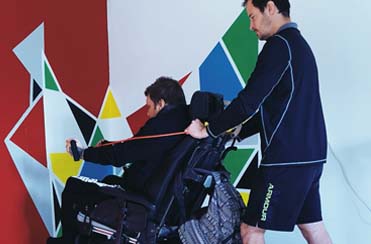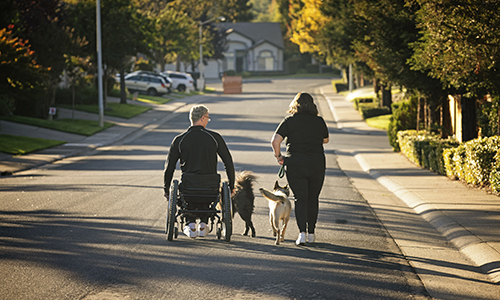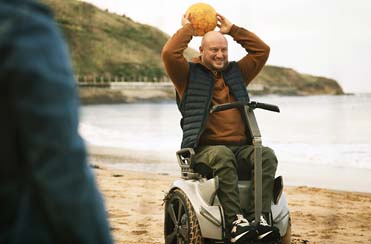Exercise is an integral part of any healthy lifestyle and is essential for those living with a spinal cord injury (SCI). Even if you cannot perform the exact exercises as someone without an SCI, plenty of adaptations can be made to help you exercise with a spinal cord injury and enjoy an active lifestyle.
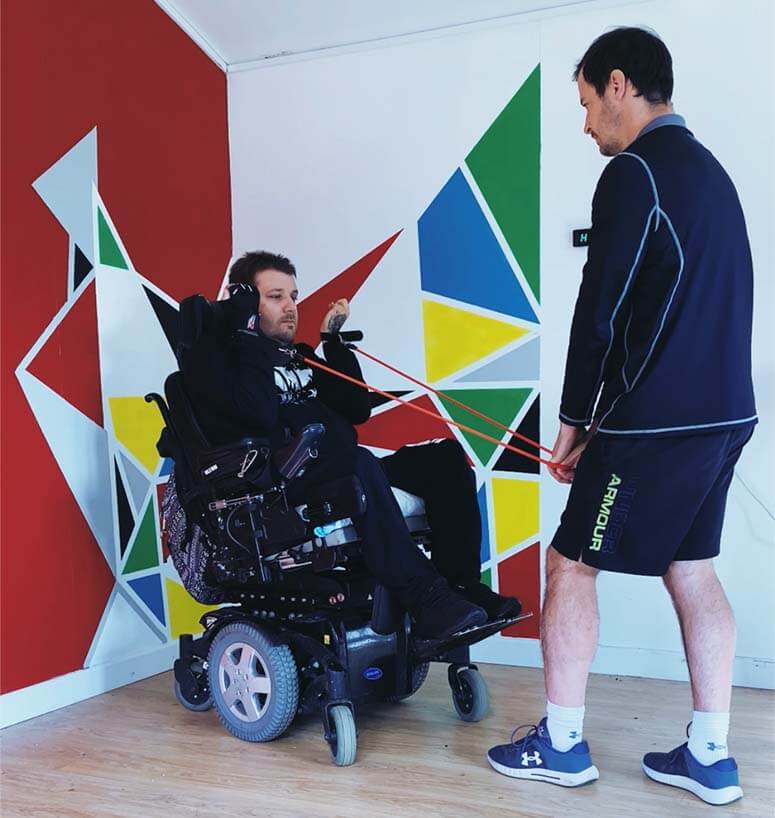
There is an extensive list of reasons why physical exercise is beneficial for those living with a spinal cord injury. These include improving your overall health and mental well-being, including preventing depression.
The most important of these, from a physical perspective, include improving your strength, posture and endurance levels (muscular and cardiovascular) as key components that benefit from a regular structured SCI exercise programme.
Starting to exercise with a spinal cord injury
When exercising with a spinal cord injury, and much like many other disabilities and health concerns, there are always barriers to exercise and it’s often due to accessibility. Barriers can include:
- Limited transport options
- Unsuitable gym access/environment
- Unusable equipment
- Instructors lacking understanding or knowledge
- The exercise programme is not SCI-specific and is simply unrealistic to achieve.
To get started with exercising with a spinal cord injury, an accessibility shortcut is to start with a spinal cord injury home exercise programme with exercises and equipment adapted to fit your needs.
There are many different types of SCI-suitable exercises that you can do at home, but some of the most popular options include the following:
- Shadow boxing
- Circuit training
- Machines such as hand cycles or rowers.
If you’re starting out, it’s best to start slowly and gradually increasing your workouts' intensity and duration over time. Remember, always consult with your doctor before starting a new exercise routine with a spinal cord injury.
Spinal cord injury home exercise programme ideas
The following SCI exercise programme includes a few helpful tips and ideas for adapting exercises to create a suitable spinal cord injury home exercise programme.
Warm up & cool down
Make sure to warm up and cool down properly. This helps reduce the risk of injury and prepares your body for the workout.
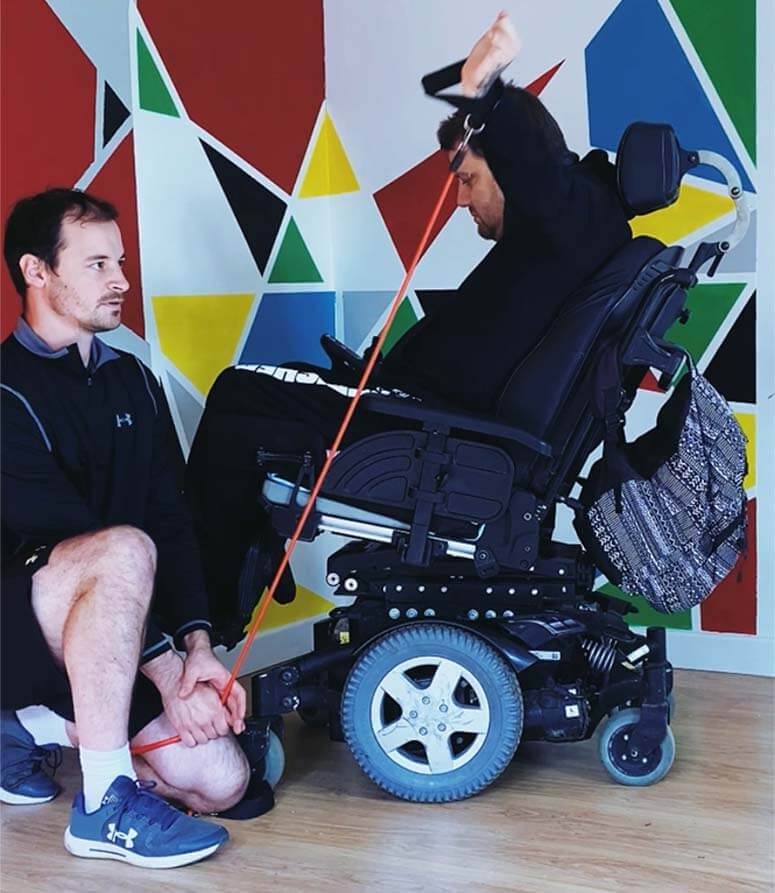
Use adaptive aids or equipment
For example, use Velcro hand gripping aids for resistance bands, bars and dumbbells. These help to ensure that you can push yourself further and challenge your body while regaining strength. As mentioned earlier, this offers many benefits in improving mental health and can even open up a new lifestyle to those living with a spinal cord injury.
For those on a higher budget, there are also exercise bikes specially designed for people living with an SCI.
Invest in resistance bands
Resistance Bands are an effective and easy-to-do type of seated exercise. Try these from your chair/wheelchair.
These SCI exercises come with various benefits, including building strength and improving range of motion while improving circulation and reducing the risk of pressure sores and other issues related to skin breakdown.
The following video provides guidance on how to performance the exercises with written instructions below.
Bicep Curls
Start with your arms straight or on your lap, then curl your wrists towards your shoulders. Lower slowly to the starting position.
Assistant - Stand in front of the participant and hold the band in line with their knees.
Side Raise
Hold the band with your arm by your side, then slowly raise your arm out to the side. Lower slowly to the starting position.
Assistant - Crouch in front and to the participant's side and hold the band low to the floor.
Rowing
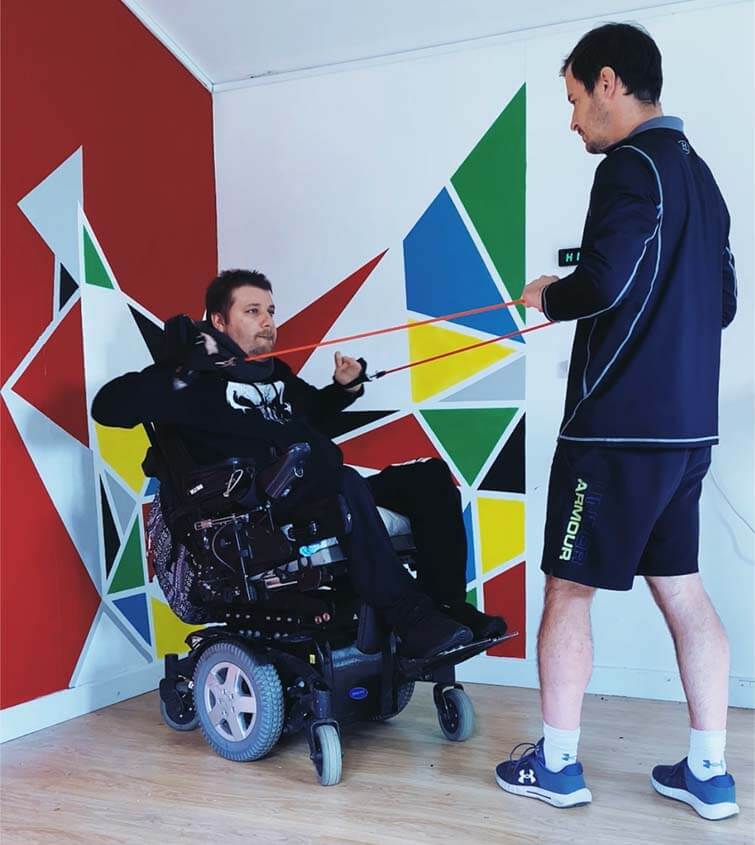
Hold the band with your arms straight in front of you, then pull your elbows back. Lower slowly to the starting position.
Assistant - Stand in front of the participant and hold the band in line with their chest.
Push Down
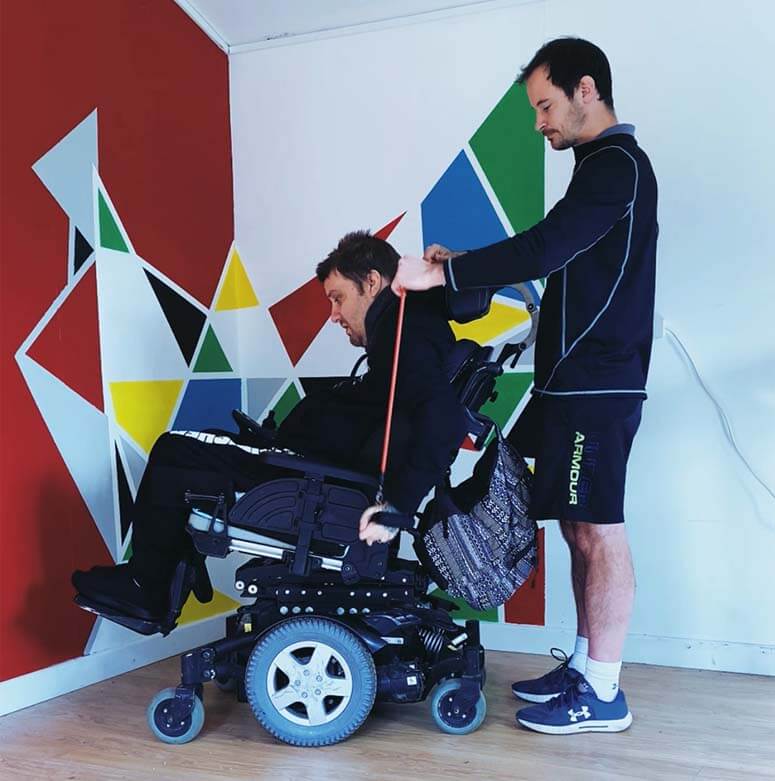
Hold the band with your hands close to your hip on the outside of your chair, then push your arms down to the side. Lower slowly to the starting position.
Assistant - Stand behind the participant and hold the band in line with their shoulders.
Shoulder Press
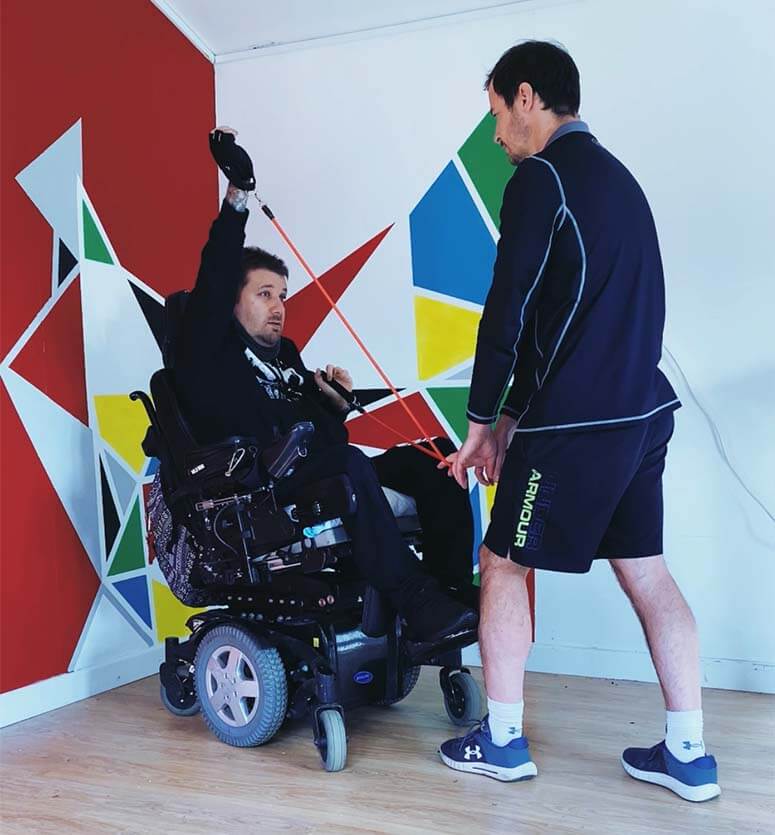
Start with your arms on your lap, then raise your wrists up high. Lower slowly to the starting position.
Assistant - Stand in front of the participant and hold the band in line with their knees.
Chest Press
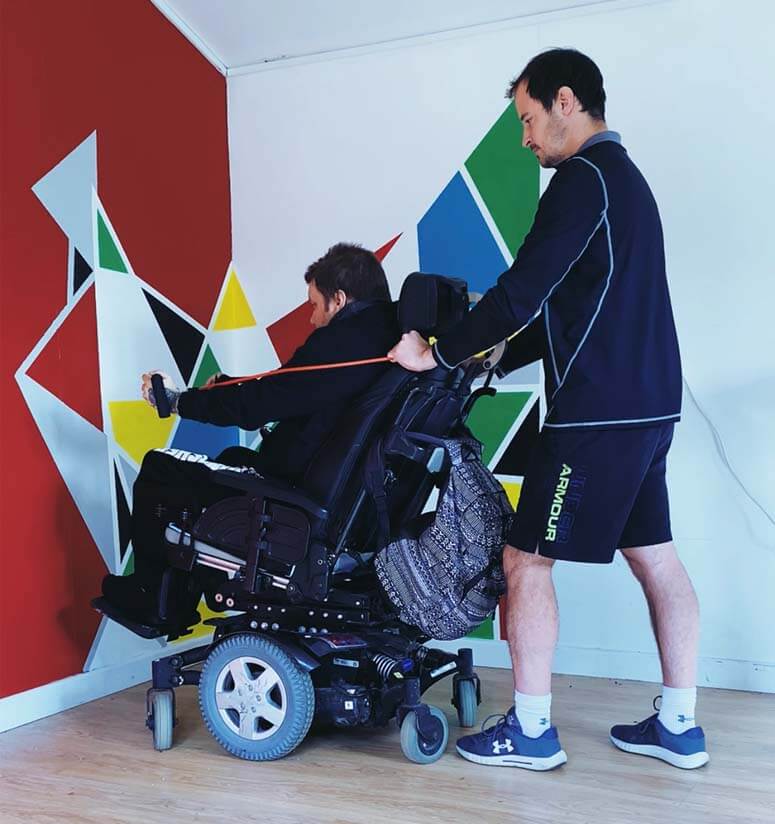
Hold the band with your hands close to your chest, then push your arms out in front. Lower slowly to the starting position.
Assistant - Stand behind the participant and hold the band in line with their shoulders or chest.
Try interval training instead of doing long workouts
This involves alternating short bursts of high-intensity exercise with short rest periods or lower-intensity activity.
Take breaks as needed
Don’t push yourself too hard, or you could injure yourself. Listen to your body and take a break when you need it.
About me
Ten years ago, I focused on creating as many accessible fitness opportunities as possible. This came about because I started working with a client with a C4 spinal cord injury. He explained his circumstances to me, saying other trainers had rejected him due to the training limitations, which didn’t sit right with me as fitness should be for all.
My adaptive approach towards exercise enabled us to get started and it moves me to keep sharing that we are still training together ten years on.
How am I making fitness accessible? I promote accessible fitness opportunities and possibilities to people who require exercise adaptations - see @Makingfitnessaccessible on Instagram.
I also run a business called Therapy Gyms which (A) supports people who require accessible opportunities to find a suitable programme or gym and (B) supports exercise instructors to understand accessibility and provide more opportunities. I love what I do.
Matt Brinkley - Accessible Fitness Expert
https://makingfitnessaccessible.com - Discover your fitness opportunity (Free Guide)
Instagram - @Makingfitnessaccessible



